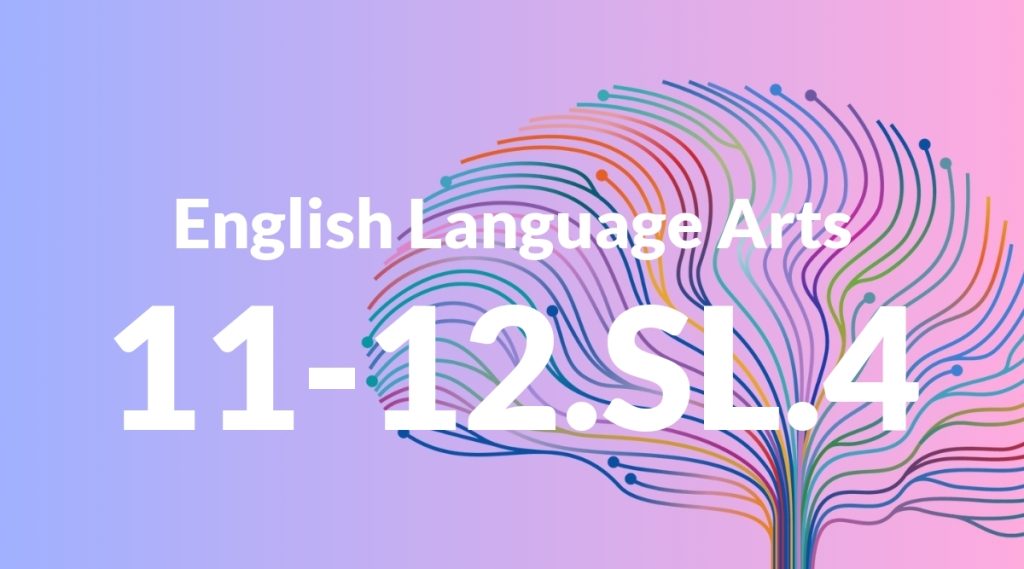Standard: 11-12.SL.4 – Present information, findings, and supporting evidence, conveying a clear and distinct perspective, such that listeners can follow the line of reasoning, alternative or opposing perspectives are addressed, and the organization, development, substance, and style are appropriate to purpose, audience, and a range of formal and informal tasks.
Grade level: Grade 11-12
Subject: English Language Arts
Domain: Speaking & Listening
Teacher Overview
This standard emphasizes the importance of presenting information and evidence in a clear, organized manner while considering the audience and purpose. It helps students develop critical communication skills that are essential for both academic and real-world success. Students should be comfortable with basic public speaking and have a foundational understanding of argument structure and evidence types.
After mastering this standard, students will be able to engage in more sophisticated forms of communication, such as leading discussions, conducting interviews, and delivering keynote speeches.
Common Misconception 1
A common misconception is that clarity alone is sufficient for a good presentation. However, addressing opposing viewpoints strengthens the argument and shows critical thinking.
Intervention 1
Encourage students to practice identifying potential counterarguments and integrating responses into their presentations through role-playing exercises.
Common Misconception 2
Another misconception is that one presentation style fits all. In reality, different contexts require different approaches to effectively communicate with varied audiences.
Intervention 2
Use case studies and examples to show how presentation styles should adapt to different audiences and purposes, and have students practice tailoring their presentations accordingly.
Prerequisite Knowledge
Students should have basic public speaking skills, an understanding of how to structure an argument, and familiarity with different types of evidence and how to use them effectively.
Subsequent Knowledge
Students will develop advanced communication skills, including the ability to engage with and respond to audience feedback, and the capacity to refine their presentations based on critical evaluation.
Instructional Activities
- Role-playing exercises where students present to different types of audiences
- Workshops on identifying and responding to counterarguments
- Peer review sessions to provide feedback on presentation style and content
- Group projects that involve presenting research findings




